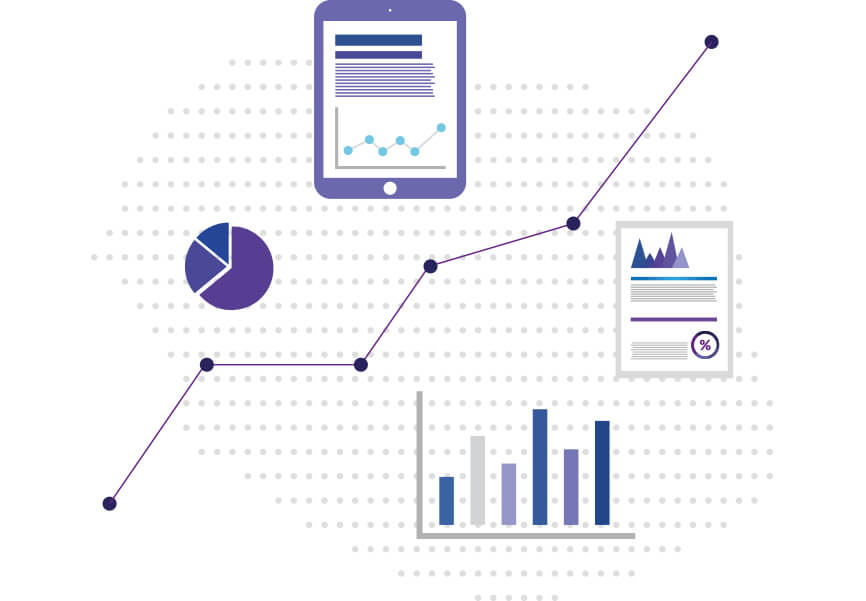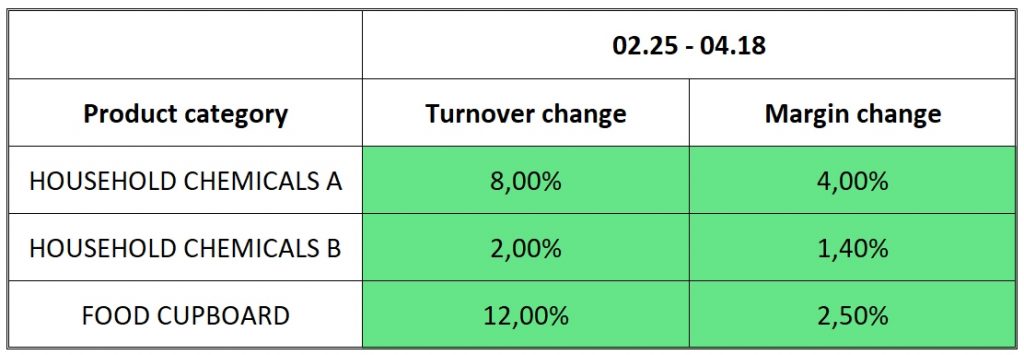How did our client increase turnover by 12% and margin by 2,5 pp in two months?
- 14 August 2020

The e-commerce industry is very competitive – every online store wants to sell more and to more loyal customers. With such conditions, many companies believe that increasing margins, and therefore prices, may lead to an outflow of customers, and therefore a final reduction in turnover. Inexperienced shops are ready to aggressively lower the price to sell more. Unfortunately, this is the worst strategy to attract a customer as it can lead to price wars with the competition. Ultimately, this situation is unfavorable for everyone – the retailer and the producer lose profits, and the consumer is not sure if they are getting a full-value and high-quality product. Read how we helped our client in choosing a pricing strategy and how, using the Dealavo tool, they achieved a 12% increase in turnover with their margins increasing by 2.5 pp within two months on selected categories.
What have we achieved?
Thanks to the competitor price monitoring, individual pricing rules, and price automation, the company increased its turnover and margin from the first month. It wouldn’t be possible without the help of the Dealavo platform, which monitors product prices online, comparing prices and availability in selected categories. We not only provide monitoring and automation tools to the client but also conduct consulting sessions to achieve the set goals together.
Our said client had two main goals that they wanted to achieve between January and April. When estimating KPIs, we took into account the seasonality of product sales – between February and April, the turnover is normally less than between April and June. The first goal was to maximize turnover and maintain a margin mass in the Household Chemicals category. The second goal was to maximize the margin mass while maintaining the level of turnover in the Food Cupboard category. How was it possible? Let’s look at the entire process.
How did we optimize prices?
In the first stage, we analyzed the client’s prices and processes. To better understand the approach to price management, we analyzed their internal data. Thanks to this, the new strategy and pricing rules were based on hard data. First of all, we checked:
- last year’s trends,
- product categories,
- functioning pricing processes,
- customer segments,
- factors related to purchasing decisions.
When analyzing the raw data, we also interviewed employees to clarify the processes taking place in the above areas. Appropriate customer segmentation turned out to be an important element – knowing the target profile, our client could determine how to reach the group interested in the purchase.
There are many players and fierce competition in the e-commerce market. Therefore, in the second stage, in addition to reaching the target group, it was important to monitor the prices of competitors. While a simple price comparison of several products can be done manually, comparing multiple SKUs to different competitors would be time-consuming and it’s better to choose a price monitoring platform. Keeping track of what’s happening on the market is a key element in properly estimating recommended prices in the future.
The next, third stage, was based on the strategic optimization of regular prices and the implementation of the new pricing rules. Thanks to earlier data analysis, conversations with employees, and detailed market research, we have created price rules taking into account the price elasticity of products and their division into categories. After defining the individual pricing rules designed specially for the client and their industry, the data was sent to the Dealavo platform. You can read more about the pricing rules here.
In the fourth stage, the client used the Dealavo Dynamic Pricing price automation tool, in which the prices were calculated and recommended automatically, according to previously established rules. The recommendations were made once a day based on data on the competitors’ regular prices and their promotions.
In the fifth stage, KPIs were monitored, and goals and pricing rules were updated. We compared the introduced rules with the reactions of consumers and the translation into the number of sales. We introduced the necessary modifications, taking into account the prices and availability of competitors’ products. Data on product categorization and price elasticity was also included.
Thanks to the Dynamic Pricing tool, we were able to:
- test recommended prices for ~ 20% SKUs of the category first, and then apply for other products,
- conduct A / B tests that checked which prices work best,
- monitor established KPIs.
The results of the price automation project

Our client achieved both of their goals. Turnover in the category of Household Chemicals (A and B) increased by 8% and 2%, respectively, and the mass margin by 4 pp and 1.4 pp. The second goal was to maximize the mass margin while maintaining the level of turnover in the ]Food Cupboard category. This goal was also achieved – the results of an increase in the margin by 2.5 pp and in turnover by 12% are quite impressive.
If you would like to know more, you can find the complete case study here.
In addition to analyzing historical data, it is worth investing in a tool for monitoring competitors’ prices and price automation. Thanks to a platform such as Dealavo, we will not only save time but also better choose a strategy tailored to your e-commerce. The price automation tool makes it easy to implement new strategies and established price rules, and achieve KPIs. The numbers are the best proof that the platform supports a well-thought-out strategy, stabilization of the market position, and, ultimately, an increase in turnover. And every company that wants to become a market leader or maintain its position should strive to increase turnover and continuously monitor competition behavior.